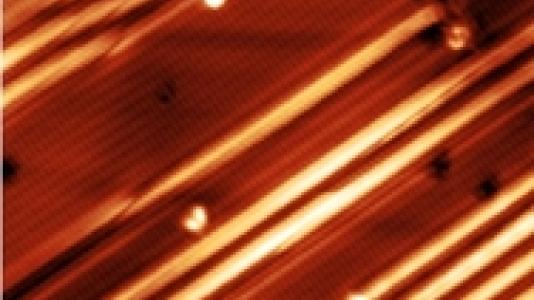
First-principles calculations demonstrate that periodic nanoscale one-dimensional undulations can be preferred in borophenes on concertedly reconstructed Ag(111). This “wavy” configuration is more stable than its planar form on flat Ag(111) due to anisotropic high bending flexibility of borophene that is also well described by a continuum model. Atomic-scale ultrahigh vacuum scanning tunneling microscopy (UHV STM) characterization of borophene grown on Ag(111) reveals such undulations, which agree with theory in terms of topography, wavelength, Moiré pattern, and prevalence of vacancy defects. Although the lattice is coherent within a borophene island, the undulations nucleated from different sides of the island form a distinctive domain boundary when they are laterally misaligned. This structural model suggests that the transfer of undulated borophene onto an elastomeric substrate would allow for high levels of stretchability and compressibility with potential applications to emerging stretchable and foldable devices.
The recent discovery of borophene, a two-dimensional (2D) version of boron, opened the door to a new field of boron-based nanoscale materials science. Striped undulations forming in the borophene films on a silver surface, presumably a means of strain relief, have been carefully controlled. The cause of the undulations was determined through rigorous computational modeling. Understanding the role of strain in 2D materials can dramatically impact future synthesis strategies along with intentional strain engineering to modify material properties. This structural model suggests the transfer of wavy borophene onto a flexible surface would allow for stretchability – with potential for flexible devices. Borophene growth and scanning tunneling microscopy (STM) were performed by scientists at the Center for Nanoscale Materials partnered with Northwestern University and in collaboration with the theoretical efforts led by Rice University.
Zhang et al., “Substrate-Induced Nanoscale Undulations of Borophene on Silver,” Nano Letters, 16, 6622 (2016). DOI: 10.1021/acs.nanolett.6b03349